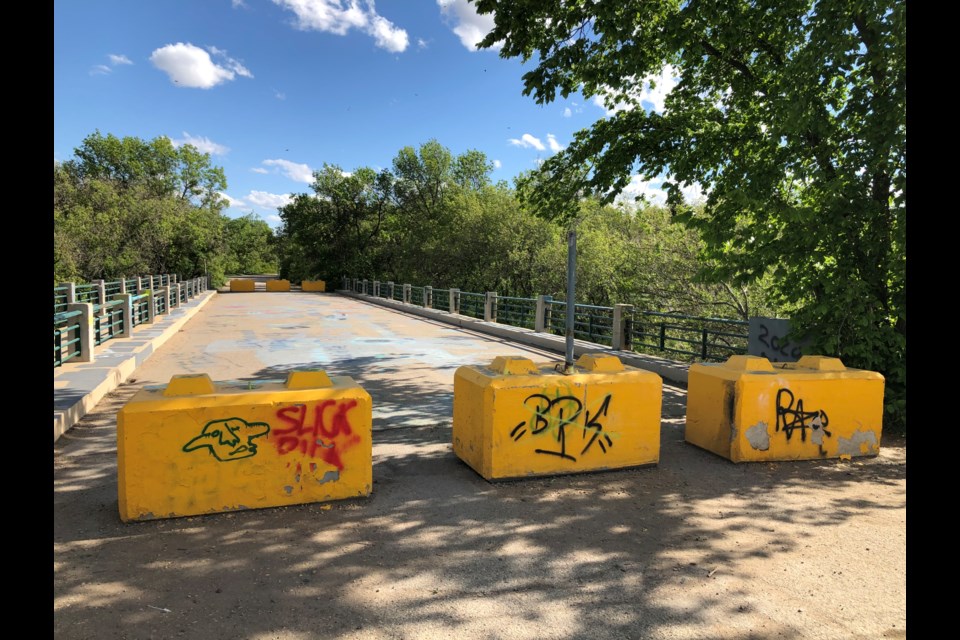The Seventh Avenue Southwest bridge “should be CLOSED IMMEDIATELY to the public” since the structure is at risk of collapsing, a new report says.
“Due to the results of the load rating indicating the structure’s inability to carry its own dead load, the structure is at risk of collapse. With snowfall already underway, this has introduced additional loading to the bridge, as there are no means of clearing the snow. The city should begin planning for removal and replacement or a major rehabilitation of the bridge,” a report by Associated Engineering (AE) says.
“It is recommended that a fence be installed at either end to inhibit the use of the structure, as well as install signage indicating that pedestrians are to stay off the structure. Additional fencing below the bridge could be considered as well.”
A review of the bridge
In mid-November, Associated Engineering examined the bridge’s structural integrity and load rating assessment after city administration asked the engineering firm to inspect and analyze the structure. The objective was to deter whether the bridge could be reopened to light commuter traffic.
The bridge has been at the centre of a six-year dispute as the Avery and Thorn families want the City of Moose Jaw to reopen the structure so they can access their homes. Instead, since 2015, when the bridge was closed after ice damaged it, they have had to drive two kilometres through the former Valley View Centre (VVC) property to reach Highway 2.
AE’s report was presented to city council during its Dec. 7 regular meeting. Stephen Chiasson, an engineer with AE, spoke by video about the document and answered questions from council.
The Thorn and Avery families spoke later during the meeting.
Extra weight on one side
During their inspection, the engineers discovered that there were more defects and distress in the pilings that hold up pier 3 — there are four piers that hold up the bridge — as well as the timber caps, which only provided support to the east lane of the bridge, the report said. These defects have transferred the load weight from the deck — the top part on which to walk and drive — to the additional piles of pier 3.
“Our analysis showed that by adding additional loading that used to go into the existing pilings, the cap and pilings themselves are overloaded. Not only can they not carry the additional weight of the bridge, but they are also wouldn’t be able to take light commuter traffic safely, based on the evaluation,” Chiasson said.
Therefore, Chiasson added, the bridge should not be reopened to single-lane commuter traffic, while it should be closed to pedestrian traffic.
Three recommendations
Associated Engineering presented three recommendations to address the bridge, including two options that would allow the structure to be reopened to one-lane light commuter traffic and one option to replace it.
Option 1 could cost between $600,000 and $800,000, including reducing the pressure and additional load weight on the caps by installing additional pilings to help hold up the bridge.
Option 2 could cost $200,000 and would see the west side of the bridge demolished, which would remove pressure from the east side. This side could then be a single-lane for two-way traffic and pedestrian access. The load limit would still be five tonnes — emergency vehicles would still not be able to cross — while the structure would still be susceptible to flood damage.
Option 3 would be to replace the bridge for roughly $2.7 million, excluding other costs such as paying a contractor or contingency funds.
The overall cost to demolish the entire bridge is roughly $250,000. AE recommended that demotion occur in the winter during low flow.




